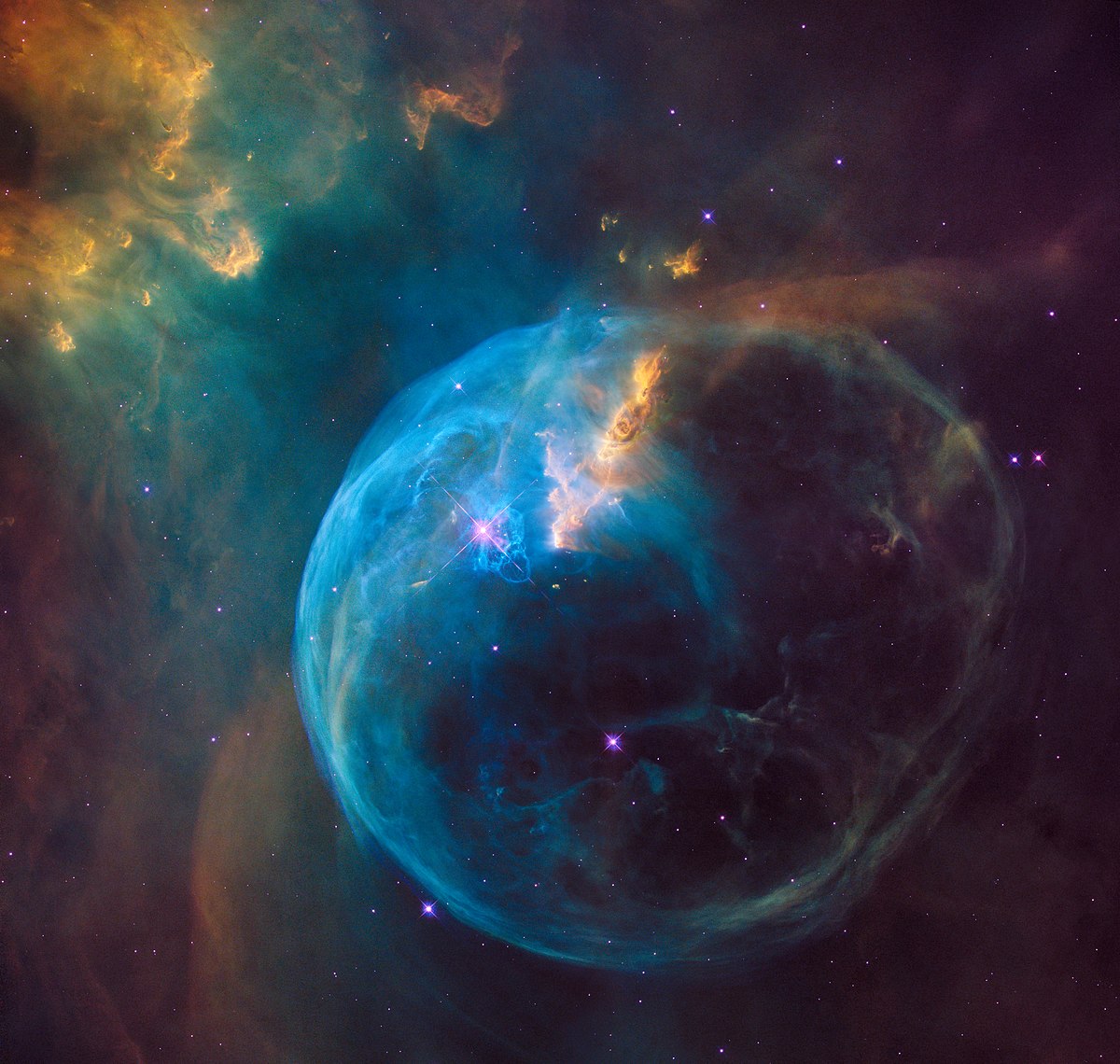- Stars are huge celestial bodies made mostly of hydrogen and helium that produce light and heat from the churning nuclear forges inside their cores. Aside from our sun, the dots of light we see in the sky are all light-years from Earth. Most stars are very similar to our sun. In fact, the sun is a pretty normal kind of star.

Three end stages of stars are: White Dwarf. Neutrons Star. Black Hole.
The Milky Way Galaxy has a splinter of stars and gas sticking out that is 3,000 light-years long. We believe young stars and nebulae align with the shape of the galactic arms.

- The Eagle Nebula contains the Pillars of Creation. The gas and dust are creating new stars, while also being eroded by the light from nearby stars that recently have come into existence. This enormous stellar nursery lies 7,000 light-years away in the inner spiral arm of the Milky Way.


- Stellar winds are fast moving flows of material (protons, electrons and atoms of heavier metals) that are ejected from stars. A continuous outflow of material characterises these winds moving at speeds anywhere between 20 and 2,000 km/s. red giants and supergiants, and asymptotic giant branch stars. I understand these winds to be driven by radiation pressure on dust condensing in the upper atmosphere of the stars. Young T Tauri stars often have powerful stellar winds.
- When the core of a protostar has reached about 10 million K, pressure within is so great that nuclear fusion of hydrogen begins, and A Star Is Born. A low-mass star becomes a white dwarf.
- Stars are born in enormous clouds of gas and dust. When this happens, nuclear fusion can start and A Star Is Born. They call this stellar ignition. Stars are not genuine stars until they can fuse hydrogen into helium. When a main sequence star runs out of hydrogen fuel, the star becomes a red giant or a red supergiant. When a massive star runs out of fuel, it cools off. This causes the pressure to drop.The collapse happens so quickly that it creates enormous shock waves that cause the outer part of the star to explode! Usually a very dense core results along with an expanding cloud of hot gas called a nebula.
- White stars are hotter than red and yellow. Blue stars are the hottest stars of all. Stars die because they exhaust their nuclear fuel. Once there is no fuel left, the star collapses and the outer layers explode as a supernova What’s left over after a supernova explosion is a neutron star, the collapsed core of the star, or, if there’s sufficient mass, a black hole.
-
A black hole is a region in space where the pulling force of gravity is so strong that light cannot escape. Some black holes result from dying stars. Because no light can escape, black holes are invisible. However, space telescopes with special instruments can help find black holes.

- Iron from a stellar core can explode into a supernova, or collapse into various types of neutron stars, or even form a black hole. The iron in the star’s core isn’t the reason the star went supernova, as its overall mass made it explode.






